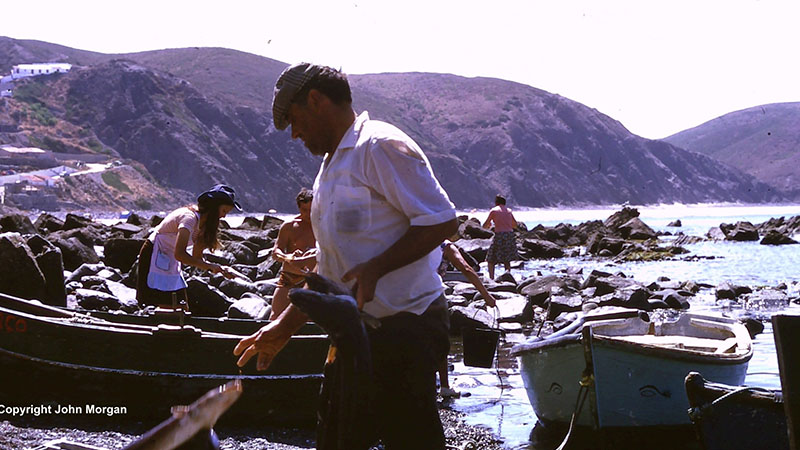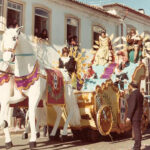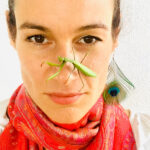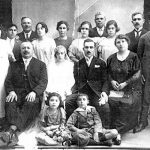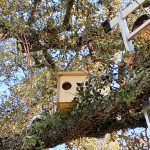The urbanisation of Vale da Telha, a beautiful place in Aljezur, has a short but controversial history. Resident Johan de Goed set out to collect memories about this place and find out more about its beginnings – part two.
Words Johan de Goed
The more time I spend out and about in Vale da Telha, the more I notice there are many people who want to share their stories.
As the population of Aljezur includes such a large number of non-Portuguese residents, it’s important that I also speak to the original Portuguese inhabitants.
This time I have recorded memories from Jorge Branco, a Portuguese man that has lived in Vale da Telha almost since the urbanisation was created. Jorge is one of the founding members of AMOVATE (Associação de Moradores e Amigos do Vale da Telha). AMOVATE started with mainly Portuguese residents who wanted to improve the living conditions for everyone living in Vale da Telha.
Originally, Jorge Branco came to work as an interpreter for the businessmen that had plots to sell related to SOMUNDI (Sociedade Turística do Algarve, Lda), the company belonging to Sousa Cintra. But he stayed and started his own business, Terraviva, a maintenance company for gardens, pools and houses.
Our talk takes place in the Restaurant Fonte do Vale. When I ask him about his first memory, he immediately says “Arrifana”. When he says it, his eyes get a shine and the name is pronounced in slow motion. “I came to Vale da Telha in 1986 and I was amazed by the views of Arrifana. It was one of the most beautiful places I had ever seen,” he says. And so he stayed.

Jorge Branco

Reception of urb. VDT pormenor of an advertising brochure
On moving there, he became aware of the lack of infrastructure in the area. When it was raining, he often didn’t have electricity or a phone service. He often didn’t have water because the provider was from a furo cartesiano, and there were not enough for all the houses. There were also problems with the quality of water, which contained too much iron. He explains, “AMOVATE in its beginnings, was responsible for significant improvements, namely in the change of the water supply. A group of people went to the Câmara Municipal de Aljezur and asked for them to take over the water provision from SOMUNDI. We were successful, and the water started to come from the dam.”
I ask him how he remembers Vale da Telha at that time. “The first people buying in Vale da Telha were Swedish and Danish, after came the Germans followed by the English. Many of the initial buyers are not here anymore. There were also a lot of Portuguese emigrants from France. The main entrance was the reception (today the bicycle shop), the building remains exactly the same from the outside. In this reception, the people were welcomed and it was here that the people could find all the information and the location of the plots that were for sale and for finding where people live for visitors and deliveries.”

We continue the talk and Jorge talks now about the restaurants and bars he remembers from that time. “I remember that there was a fireplace in Restaurante Vale da Telha and I spent a lot of time there with a small group of people. We used to eat a lot of fresh fish and seafood. Sometimes, a fisherman would enter the restaurant to sell seafood or fish. Ivo, the manager of the restaurant (a man from Sagres), usually cooked the seafood and the fish that we ate. At that time, you had more supply than demand! So, we ate delicious sargos and robalos for a cheap price. The food was amazing.” He continues: “We used to play lerpa (a card game) with the fisherman from Arrifana and we drank together. They were really fun times.” As I listen to Jorge, I feel that I would love to have had the experience of those times as well.
Jorge remembers a German man, called Wolfgang who became his friend. He was part of a German community that was living near Vale da Telha, in Vales, that started to learn how to fish with the locals. Wolfgang came to the area in 1976 as a young man and learnt fluent Portuguese. He spent a lot of time with Zé Fininho, a seafood fisherman (mariscador), who is still alive and living in Vale da Telha, and Álvaro Gringo. These were the followers of the cliff men, Os Homens da Falésia. If you haven’t seen the documentary, you must,” Jorge says. The fishermen didn’t have many places to sell the fish and seafood, so there was a lot of it available. Today things have changed. There are a lot more places to sell and not so much fish. In those days, the fisherman swapped some sargos for one plate of meat.”

I ask him now about strange things that he can share with us. Jorge says “There were so many rabbits in Vale da Telha that a quick car trip would bring us one or two rabbits that would be cooked by Ivo the next day.”
I ask him if he knows anything about the buildings near the road to Ribat of Arrifana (the ones that look like old stables). He replies, “Yes, they were real stables from SOMUNDI. One of the people working for the company was a retired infantry colonel and the company ran horse riding tours.”
Speaking to Jorge has been a very enjoyable trip back through time to the old Vale da Telha when estrangeiros were only just beginning to discover its treasures.
It’s important though that I speak to both the original Portuguese inhabitants and listen to relative newcomers from other parts of the world, which balances the stories I am hearing. I remember a special couple, Johnny and Liz Wilson. An Irish couple, they left Vale da Telha in 2006 to live in Spain. “We first went to the Restaurant Fonte do Vale in February 2007 for our wedding anniversary, we had a nice meal and, being February, it was very quiet. Silke Wehrmaker was the owner then and she ran the business herself with her kitchen staff.”


Stables somundi pormenor of an advertising brochure from that time
Johnny and Liz started playing music gigs later that year and over the following years played several gigs at the Fonte. During the economic slowdown of 2009 to 2012, they had a very successful weekly gig at the old Piranha Bar. Every Sunday from 5 pm, they would play music from the 60s, 70s and 80s to a full house.
When the Piranha closed in 2014, they had no regular gigs locally for a year or so but then moved to the Chicken Shack, where the local Petanca club was based. They had a monthly gig there for a couple of years, with food available on the music days. When Ana Sofia and David took over in about 2016, they played there to a happy crowd once a month until their final gig in October 2018. This I still remember, even though it feels like it was a long time ago!
As I reflect on these memories, old and new, I conclude that maybe the charm of this area is the amalgamation of tradition with the energy and dreams of the people that moved here when the development was started in the 1970s. It is what has made it the patchwork of different nationalities, modernity and old-fashioned charm that we all appreciate today.
Main image: Arrifana in August 1975 ©John Morgan
Watch Homens da Falésia: https://arquivos.rtp.pt/conteudos/homens-na-falesia/
